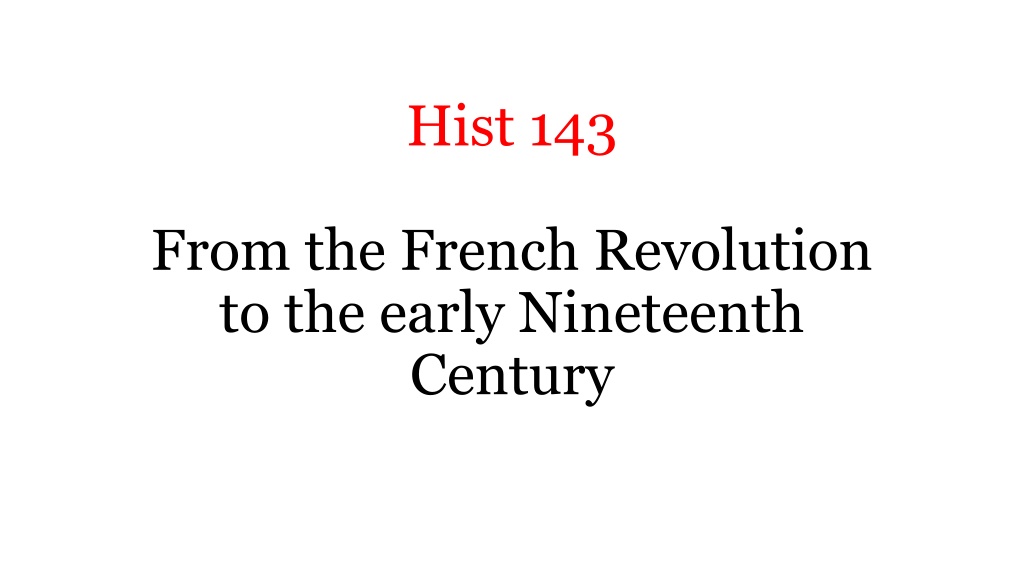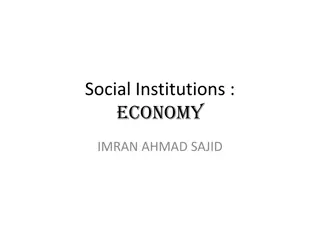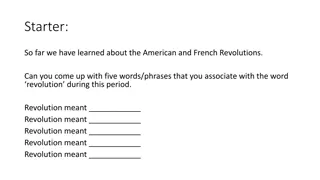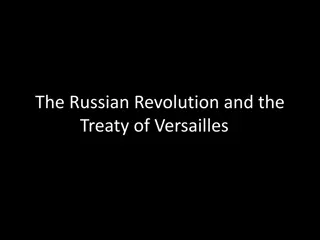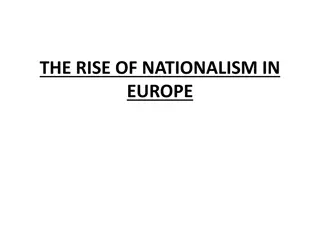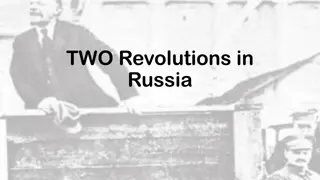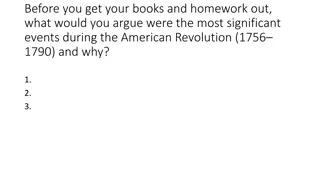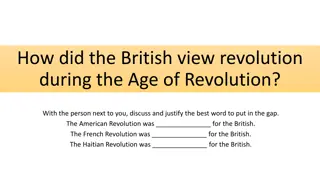Europe from French Revolution to Revolutions of 1848
From the French Revolution to the early nineteenth century, Europe saw significant political changes, including the rise of Napoleon Bonaparte, the Congress of Vienna in 1815, and subsequent revolutions like the 1830 French Revolution and the Revolutions of 1848 that spread across Europe, shaping the continent's political landscape.
Download Presentation

Please find below an Image/Link to download the presentation.
The content on the website is provided AS IS for your information and personal use only. It may not be sold, licensed, or shared on other websites without obtaining consent from the author. Download presentation by click this link. If you encounter any issues during the download, it is possible that the publisher has removed the file from their server.
E N D
Presentation Transcript
Hist 143 From the French Revolution to the early Nineteenth Century
From Revolution to Napoleon 1794 Robespierre and other Terror Revolutionary Leaders Guillotined. The Directory (moderate Revolutionaries) take over France has been at war with other European powers sinc 1792 A brilliant general emerges, Napoleon Bonaparte. He is at first promoted by the Directory but in 1799 carries out a coup d tat and takes over as a kind of dictator, later making himself Emperor Defeating Austria in 1805, Napoleon ends the Holy Roman Empire and remakes the German states, as well as many others, as parts of his huge empire. The wars of the French Revolution and Napoleon will last until 1815, when the Allies finally beat him at Waterloo.
The Congress of Vienna, 1815 The Allies gather at Vienna to make a peace. The peacemakers include as an equal the restored Bourbon monarchy in France, under Louis XVIII, the brother of the beheaded Louis XVI At Vienna: Metternich, foreign minister of Austria; Alexander I, Tsar of Russia; Castlereigh, foreign minister of Britain; and other leading lights. The peace is a very stable, negotiated peace. France is put back to the borders of 1789, but the Holy Roman Empire is not restored, but replaced with a Germanic Confederation, with the Austrian Emperor as its President. The great powers work for themselves, but everyone wants stability, order, and a balance of power.
After the Congress Easy to talk about stability, but revolution and change is in the air. And especially the changes demanded by nations who want to be independent. Louis XVIII in France makes compromises which concede much to popular rule, but he dies in 1824, and his conservative brother comes to the throne as Charles X. Charles is kind of absolutist, and the elites and urban workers rise up against him in 1830, running him out of the country and proclaiming the Duke of Orleans as king: he takes the title of King Louis Philippe The 1830 French Revolution spreads to many other countries, contributing to political instability.
Britain Victorious as the leader of the Allies against Napoleon, Britain ends in a strong position and very conservative rule. But from the 1830s, rural and urban workers organize protests for more democratic reforms. Only individuals who are relatively wealthy can vote for members of Parliament, for example. Their protest turns into the Chartist Movement, which demands democratic reforms. The upper classes take the wind from their sails by passing the Parliamentary Reform of 1832, which broadens the voting electorate from 400,000 to 650,000.
The Revolutions of 1848 The French had another revolution, kicking out Louis Philippe and establishing a republic, the Second Republic. Folks said, When Paris sneezes, Europe catches cold! and revolution spread to the majority of countries in Europe. (See nineteenth- century Info sheet for more on this)
